Since celebrating the fall of Kabul a month ago, after years of waging a holy war to overthrow the U.S.-backed government, the 250 Taliban fighters under Abdulrahman Nifiz’s command have struggled to adjust to their new day job: the mundane task of securing a city.
All of my men, they love jihad and fighting,” he said. “So when they came to Kabul they didn’t feel comfortable. There isn’t any fighting here anymore.”
Just months ago, the unit was staging attacks on government outposts and convoys. Now the fighters are standing at checkpoints, searching cars and inspecting vehicle registrations.
“Many of my fighters are worried that they missed their chance at martyrdom in the war,” Nifiz said. “I tell them they need to relax. They still have a chance to become martyrs. But this adjustment will take time.”
Taliban leaders claim the group has changed since it last controlled most of Afghanistan in the 1990s and have suggested it could be a more tolerant governing force.
But interviews with more than two dozen Taliban fighters, commanders and leaders since the fall of Kabul reveal a movement open to some change but one that is dedicated to the harsh enforcement of rules — such as gender segregation — that date to the movement’s founding.
While most of the group’s political leadership has spent years meeting with foreign officials over a decade of peace talks with the United States, the Taliban rank-and-file has been fighting a war they believed was sanctioned by God, offering them a clear path to paradise in the afterlife.
The result is that violence and intimidation remain central to how the Taliban maintains order, at least for now.
Our new work is different. It’s a huge change,” Nifiz said, “but day by day everyone is becoming more experienced, and because of that we are changing.”
The men under his command said they agreed. “We follow the orders of our leadership,” said a 19-year old fighter, Ahmad. “And our leadership said this is our new responsibility.”
But privately many of the men admitted feeling homesick for their villages in Wardak, where Nifiz and his unit are from.
In Wardak, we lived among the people, not like this,” Nifiz said, gesturing to the government police compound that was now his base. The complex was surrounded by layers of blast walls. The rooms were designed for bureaucrats, with large imposing desks, lines of overstuffed chairs and bookshelves that once held framed photographs of senior Afghan government officials.
In central Kabul, Taliban commanders described similar struggles. When peaceful protesters were recently attacked by Taliban fighters sent to disperse the crowd, the group’s spokesman, Zabihullah Mujahid, excused the violence, saying, “The fighters are not trained to deal with protests yet.” He gave a similar explanation when journalists were badly beaten.
Taliban leadership — made up of figures from the movement’s old guard — is under immense pressure to regain access to the billions of dollars in aid money that kept the previous government afloat. Many of the countries in control of that cash flow have said the group’s actions regarding human rights, the rights of women and civil liberties will be key to their decision-making.
Since the Taliban took control of Afghanistan, the group has declared unauthorized protests illegal, barred women from working in most sectors and restricted access to education for women and girls, citing security concerns. But in an attempt to signal things are different, the movement has made some cosmetic changes.
Taliban fighters are increasingly wearing uniformed fatigues in Kabul, a move that the group’s leadership says will help distinguish them from criminals claiming to be members of the group. One of the first Taliban units to be clothed and equipped like a professional military was the Badri 313 unit, which helped secure Kabul’s airport during the chaotic U.S. airlift.
The men for this unit were selected from among the martyrdom seekers within the Taliban,” said the top Badri commander, Saad, who refused to give his last name or home province, citing security concerns. He said that he joined the group when Mohammad Omar was its leader.
Martyrdom seekers have different skills,” he said. “Some were trained to use vest bombs, others in car bombs or targeted killings, and some were front-line fighters leading operations.”
He said the Badri unit was created from this pool of people because they displayed the greatest dedication to the Taliban’s military operations and ideological values. “We already know they are willing to sacrifice themselves for this country,” he said.
On a recent day in Kabul, the Badri fighters were moving into an old security compound inside the Kabul airport. Men were sorting through piles of uniforms, helmets, toiletries and rations left behind by Afghan forces. Photographs of a previous director of airport security had been hurriedly torn down.
Hikmatullah Hafiz had just arrived in Kabul after being selected to join the elite unit.
Before I was a guerrilla warrior, and now I’m a soldier,” he said, gesturing to his uniform and equipment. “We want the world to accept that we are a legitimate military, that we are part of an organized system.”
The 21-year-old joined the Taliban five years ago in Helmand, the province in southern Afghanistan where he was born. The only education he received was at a madrassa, where his teachers encouraged him to fight to reestablish an Islamic government in Afghanistan. He said witnessing civilians being mistreated by Afghan forces and killed in U.S. and Afghan government airstrikes also encouraged him to take up arms.
Another Badri fighter described a very different path to the force.
Khalid Abdullah, 26, was working as a ride-share driver in Dubai when he got a message earlier this year inviting him to return to Afghanistan and become a suicide bomber. Three of his friends working as laborers in Iran were planning to do the same. All four met up in Kabul before traveling to Paktika province for training.
It was February, and the Taliban was gaining ground as U.S. and NATO forces were withdrawing. Abdullah said he knew many other Afghans who returned to the country around the same time to join the Taliban in a fight that the militants were looking sure to win.
Halfway through the six-month course, he was told he had been reassigned to the Badri unit.
I didn’t think that one day I would be a soldier with the important job of securing an airport,” he said. But he admitted he was initially disappointed when he was told of the move.
As a suicide bomber, you are assured martyrdom,” he said, “but of course it is still possible in this role because this is still jihad.”
On Kabul’s western edge, fighters from another Taliban unit charged with protecting Afghanistan’s national museum from looting explained that they were told their assignment was intended to encourage confidence among Kabul’s residents.
Our leadership just told us that this building is important, and we shouldn’t allow anyone to loot it,” said Mohammad Javid Mubari, the leader of about a dozen men stationed at the museum. He admitted that he didn’t know what was inside the building and brushed off the question as unimportant.
Before this, I was just fighting jihad,” the 30-year-old said, boasting of his battlefield credentials. “I fought in many different provinces in Afghanistan and in Pakistan. We also trained in Pakistan, and fought against the Pakistani army.
I became the top commander in my group after the three commanders before me were killed in drone strikes,” he said with little emotion.
“I don’t have a background in archaeology,” he said of his current assignment guarding relics, including Buddhist antiquities, which many Taliban fighters view as an affront to Islam. “Our leaders will decide what will happen to the artifacts here. We don’t have the authorization to destroy them yet.”
In central Kabul, the Taliban unit charged with securing the Green Zone — a heavily fortified neighborhood that once housed many Western embassies, aid organizations and a handful of foreign news bureaus — laid out their prayer rugs in the middle of a deserted street. Just a month ago, the avenue was bustling with convoys of armored cars carrying Afghan officials, diplomats and aid workers to and from their offices.
When do you think the embassies will come back?” asked one of the older fighters, Rahimullah Hijrat. “You should tell the other foreigners to return.”
He said Kabul and the Green Zone are more secure now than before and that the country needs the same kind of help from the international community that the previous government was receiving.
He also expressed concern about the neglect that followed the rushed exit of many international organizations from Afghanistan.
We are worried about the gardens,” he said. “They haven’t been watered, and they’re dying. At least the gardeners should come back to work.”
Hijrat said he heard many Afghans who worked with foreign organizations are too scared to return to work because for years the Taliban considered them legitimate military targets. But he said he didn’t understand why they don’t believe the Taliban’s pledge that anyone who asks for amnesty will be forgiven regardless of their previous employment.
It’s different now,” he insisted. “They should trust us.”
Hijrat was a senior Taliban security official in Kapisa before the group took Kabul last month. In his home province, he said, he developed a respectful rapport with village elders and prominent families over the course of many years.
Our responsibilities are different here,” he said. “In the villages, you live among the people, they come to you with their problems. Here we are just maintaining security.
One of the men under his command said he was happy to be assigned to Kabul. Zabiullah Zahib joined the Taliban because that’s what all the other men in his family did and “because I am a Muslim,” he said.
But to be honest, I don’t like weapons. I don’t like holding a gun,” the 25-year-old said. “I’m hoping that with the Taliban in power, the security situation can improve, and I can study economics in university.
He said his mother inspired him to pursue an education. “She told me a country cannot be strong without a good economy.”
During a recent patrol, Nifiz, the commander from Wardak, bragged about the new uniforms his men had been given: traditional Afghan male dress of a long shirt over trousers but made from matching camouflage fabric.
It helps build trust with the people,” he said. During the patrol through the Kabul district under his command, he spent most of his time chiding people for driving on the wrong side of the road or parking in the middle of the street.
We have to maintain order,” he said. But over the course of a few short weeks, he said, he noticed a difference in how the residents of his district felt toward his fighters. More people were coming to his base asking for help resolving disputes, shops that were initially shuttered were back open, and more people were out walking on the streets.
Nifiz said some reports of killings and beatings of Kabul residents by Taliban fighters were true. “In some cases, our men committed mistakes,” he said, but added it was to be expected after being at war for so many years.
Even when maintaining order in villages under their control, Nifiz said he and his men were more violent with those who broke the rules. But once they entered Kabul they were under strict orders to use less force.
“Before, I was not as careful when I took prisoners, but now I want to behave better with them,” he said. When asked if he was referring to torturing detainees, he said he couldn’t discuss the matter further.
“At first everyone was scared of us,” he said. “They thought we were just these fighters who came from the mountains. But now they see we are human beings, too.”

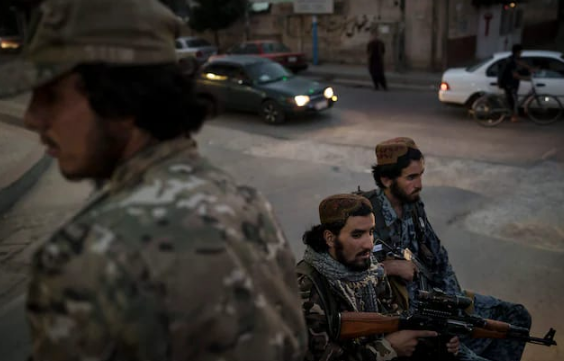


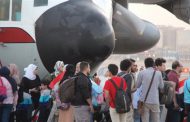
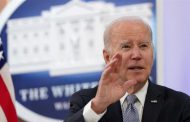
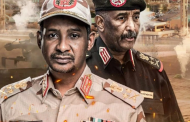
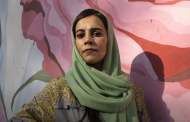
































admin in: How the Muslim Brotherhood betrayed Saudi Arabia?
Great article with insight ...
https://www.viagrapascherfr.com/achat-sildenafil-pfizer-tarif/ in: Cross-region cooperation between anti-terrorism agencies needed
Hello there, just became aware of your blog through Google, and found ...